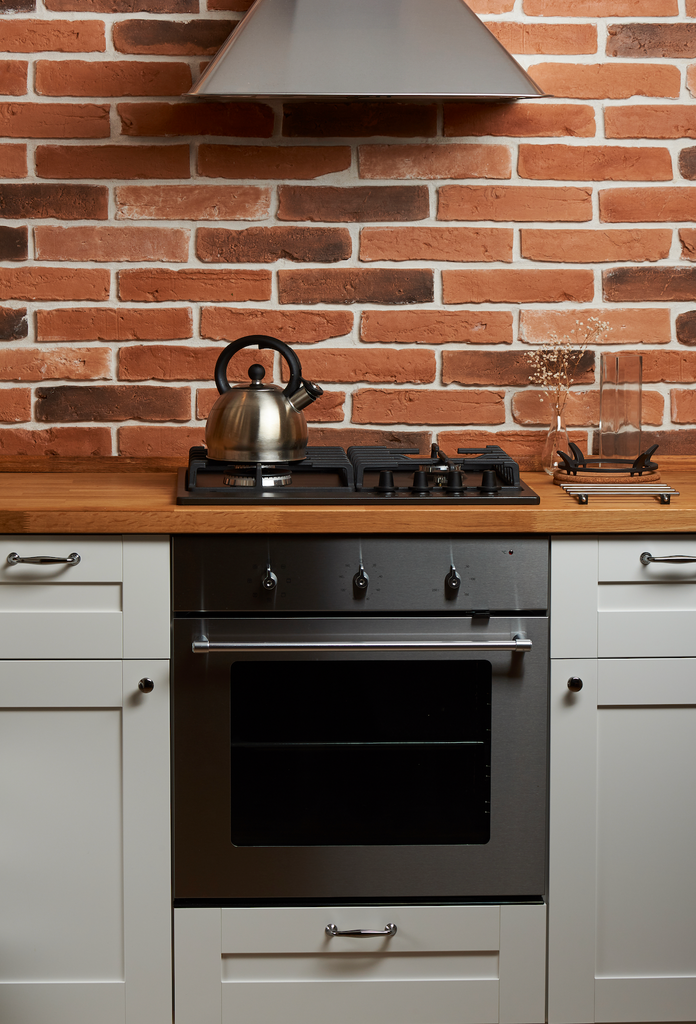If you're curious about unique wallpaper or vibrant paint, but not quite ready to take the leap, a statement wall could be just the interior design technique for you. A statement wall — or accent wall — basically differs from the other walls in a room whether that's by color, shade, design or material, and can really switch up the vibe. We spoke with two designers to get their tips and tricks on how to create a fabulous statement wall in your space, so read on to get their two cents.
Where should I begin?
Devin Shaffer, Decorilla's Affordable Interior Design Expert, notes that the most important starting point when it comes to creating a statement wall is to understand the mood that you want to feel in the space. "If you're looking to create a more energized experience, brighter colors and vibrant patterns can be added to a media wall or home office space, whereas bedrooms are quite the opposite, so you might reach for a moody charcoal or burgundy paint color to create a romantic and subdued atmosphere," he explains.
Another tip to keep in mind from Brooke McReynolds, Senior Luxe Designer at modsy, is that an accent wall can help define a particular space in an open concept or multi-use living area, for example, if you're working with an open living/dining room, a statement wall can be used to define the dining area in the space. You'll also want to use the accent wall to highlight the prime focus of a room, so look to use walls that have focal points like a fireplace or mounted TV. She tells Lively you may want to steer clear of putting a statement wall in a modest area because it can potentially make the space appear even smaller.

What can I use besides wallpaper and paint?
While wallpaper and paint are no doubt wonderful choices when it comes to designing your accent wall, we wanted to know what other materials might be out there to consider. "Wall panels are the perfect way to elevate any type of space," says Shaffer. "PVC 3D panels are an excellent, lightweight option that can be used in both commercial and residential spaces — the panels come in a variety of sizes and are easily applied with glue which makes for a fun DIY project."
McReynolds points out that wood paneling is a great look for a statement wall in a rustic or industrial style space as this particular material adds warmth and texture. Exposed brick is yet another option — she notes that exposed brick has been around for years and is timeless, but can also serve as a statement wall in anything from modern to traditional style homes.
Tile can be a fantastic way to add an accent wall in a powder bathroom or kitchen. "With the variety of shapes, sizes, and styles of tile available, you can create a focal point in these spaces that's special and enduring," she says. If you’re looking to add a statement wall to your bedroom, you might want to consider wainscotting — you can use traditional architecture patterns, or perhaps DIY your own by using MDF board (a type of fibreboard) and creating unique designs that run from the floor to the ceiling.

Any tips for incorporating artwork?
Integrating artwork is another idea. "Gallery walls are a wonderful way to showcase art and create a personalized look while avoiding highly involved design solutions — a great option for renters," says Shaffer. "When planning a gallery wall, it's crucial that you pull all of the pieces in consideration together and line them up on the wall you're planning to design in order to understand the ways you'd like the various pieces to connect." He adds that you'll want to tag your partner or friend to help with the project and that it might be as simple as having them hold pieces up and allowing you to see the arrangement from a distance.
"Bold and colorful pieces are fantastic options for artwork that you might wish to incorporate onto a statement wall as they'll help create a focal point," advises McReynolds, adding that large pieces of artwork that include multiple panels are also a great way to create said focal point.
What should I definitely avoid when it comes to my statement wall?
One big no-no is to avoid using any type of adhesive if you're a renter. "Always opt for peel-and-stick options for wallpaper or wall panels and read all reviews to make sure you have no remorse or a loss of deposit money when moving," says Shaffer. "I would also advise first purchasing a sample of the product or a single roll or panel of the material to make sure it's going to give you the look you're going for — once confirmed, you can make the leap and order the actual quantity your project requires."
"Don't just pick a random wall or you have competing focal points in your space," adds McReynolds. "As I had mentioned, statement walls should highlight some of the focal accents that already exist in the space." She also notes that you'll want to avoid using colors or patterns that don't complement the room and to steer clear of adding a statement wall to a busy room as the space may simply become too overwhelming.
Anything else to keep in mind?
For a few additional tips, Shaffer advises leaning on the experts when possible and that sources like Handy.com and Angi.com help make any type of DIY project stress-free and affordable. McReynolds adds that no room should have more than one statement wall — it serves as a decorative highlight, so having more than one will create a room that feels overpowering. She also says that you might even consider your ceilings as a way to add a statement piece to your space with contrasting colors or wallpaper.



















